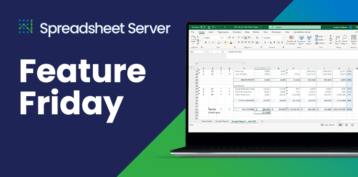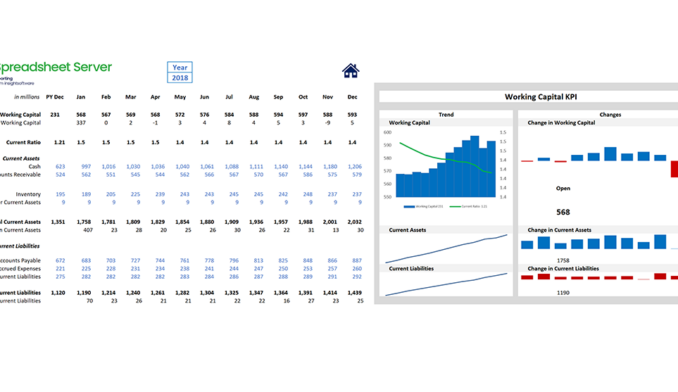What will the economy be like in 18 months, five years, or a decade? If you asked ten different people, you would get 30 different answers. We’re operating in a time of incredible uncertainty.
Right now, there is a confluence of forces challenging traditional operating models and raising deep questions about whether businesses will be sustainable moving forward. New regulations on everything from data privacy to financial transparency will make compliance an ongoing source of anxiety. Shifting profit centers and evolving revenue models are calling viability into question. Adding to the uncertainty is the unstoppable force of digital transformation, calling companies to reimagine themselves from the top down. All of this adds up to a business climate that is dominated by unknowns.
- Become a more strategic tax professional with the right tools
- 4 essential reasons to upgrade tax and transfer pricing software at the same time
- Discover the 8 key factors to consider when evaluating tax software
Since it’s impossible to plan for any particular outcome, businesses must become as agile as possible, especially in terms of finance. Accounting departments used to regular routines and gradual changes will need to adopt a whole new approach based on adaptation and flexibility. It won’t be easy, even for the most open-minded organizations. But it’s essential, because without agility, no organization can remain competitive in a time of constant change.
What Defines an Agile Financial Organization?
Every financial team has had to adapt at some point. Agile financial organizations distinguish themselves by being incredibly adept at this process, even during times of intense disruption. These qualities define the finance best teams best prepared for an uncertain future:
- A Guiding Strategy – When business conditions are perpetually changing, it’s easy for teams to lose their way. Agile organizations can pivot as necessary without straying from a core strategy like maximizing customer value or leveraging third-party partnerships. Agility is only an asset as long as teams can avoid acting erratically.
- Independently Empowered Stakeholders – Rigid team structures create the opposite of agility. Ideally, the finance team has an established leadership but an otherwise flat structure that prioritizes collaboration over hierarchy. Individuals and groups have clearly defined roles so that they can work independently, as well as have the resources and training to move between projects/priorities fluidly.
- Quick Decision Making – Being slow to act can leave a company on the fringes of its industry. A hallmark of agile teams is their ability to analyze a situation, select the optimal outcome, and implement an actionable plan all in a condensed timeframe. Quick decision making empowers finance teams to address obstacles as soon as they appear while also seizing opportunities before the competition.
- A Cohesive Culture – Fast-acting finance teams integrate new members quickly and stay stable when team members leave. A cohesive culture based on respect, accountability, collaboration, and transparency ensures that a team’s agility is not lost even when the roster inevitably changes.
- Data-Driven Technology – The greatest challenge of agility is being able to make big decisions quickly yet confidently. Data-driven technologies deliver certainty by making financial and operational data easy to access, analyze, and understand. Since every decision is backed up by data, finance is not compromised by indecision or by reckless actions.
Putting the Value of Agility in Context
Qualities like “innovative” and “cohesive” are often used to describe finance teams, even though their impact can’t really be defined. Agility is different. Extensive research into agile finance organizations compared to their peers reveals that flexibility has a measurable impact on performance.
Research from Oracle and the American Institute of CPAs shows that 89 percent of teams overseen by agile financial leaders experience positive financial growth. Only 63 percent of other teams report the same results. Plus, almost half of all agile organizations can produce forward-looking analysis, compared to just 18 percent of their counterparts.
The research goes on to show that agile teams are better at launching new products/services, entering new markets, kickstarting digital initiatives, navigating M&As, and reconfiguring business models. Given the present uncertainty, agility must be considered an obligation. Beyond that, however, it’s a major opportunity for companies to gain a competitive edge.
Building an Agile Finance Team in Five Steps.
Finance teams don’t become agile overnight, but that doesn’t mean agility has to be a long-term goal. There are steps teams can take now to immediately become more adaptable while laying the groundwork for a future of flexible finance:
- Upgrade Spreadsheet Functionality – Becoming agile doesn’t mean abandoning every legacy accounting tool. Spreadsheets, for example, are still incredibly useful even if they’re not known for their agility. Enhancing Excel with things like automatic data importing and automated reporting capabilities turns static spreadsheets into dynamic documents. Instead of inhibiting the work of accountants, they offer a deep dive into financial data plus easy access to financial insights.
- Work in the Cloud – The cloud has become synonymous with agility for a reason: It offers endless scalability, widespread customization, and anywhere accessibility. Cloud providers also handle maintenance, updating, and patching themselves, freeing accountants from their dependence on IT. More than half of all finance teams already rely on cloud technology, suggesting this is the platform of choice moving forward.
- Streamline the Financial Close – Completing the financial close is a time and labor-intensive process, which is a problem because it distracts finance teams from focusing on other things. It also means decision-makers have to wait for accurate financial information. Tools like automation, data reconciliation, and process optimization can shave days off financial closings, freeing up accountants to look forward.
- Adopt Dynamic Budgeting and Planning – Budgets and plans can’t be static documents when circumstances are continually changing. A dynamic approach allows accountants to regularly compare actual vs. originals, then incorporate the new data into the ongoing plan. Companies may be able to forecast conditions in advance, but if they can’t act in response, they’re not genuinely agile.
- Go Mobile – Think of mobility as a precondition of agility. When the finance team has access to data and tools at home or on the road, everyone stays on the same page. Mobile technologies make financial insights more accessible to everyone, including decision-makers outside finance who need data to make their own sound fiscal decisions.
Agility in 2019 leads to prosperity every year after. Or, to be more pessimistic about it, finance teams that aren’t agile soon won’t be relevant for long. Either way, the priority is clear, and insightsoftware has resources that can help. Our tools combined with your strengths make for more agile finance teams. To see these solutions in action, request a free demo








